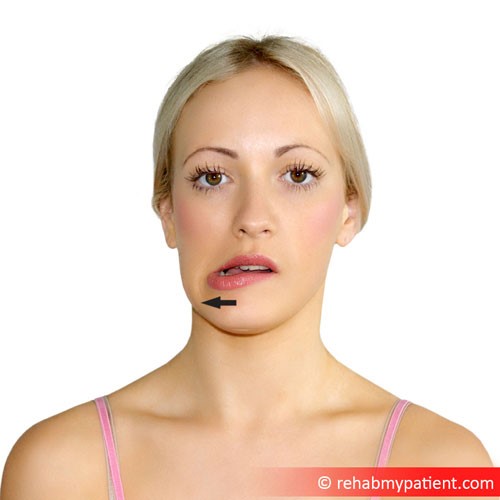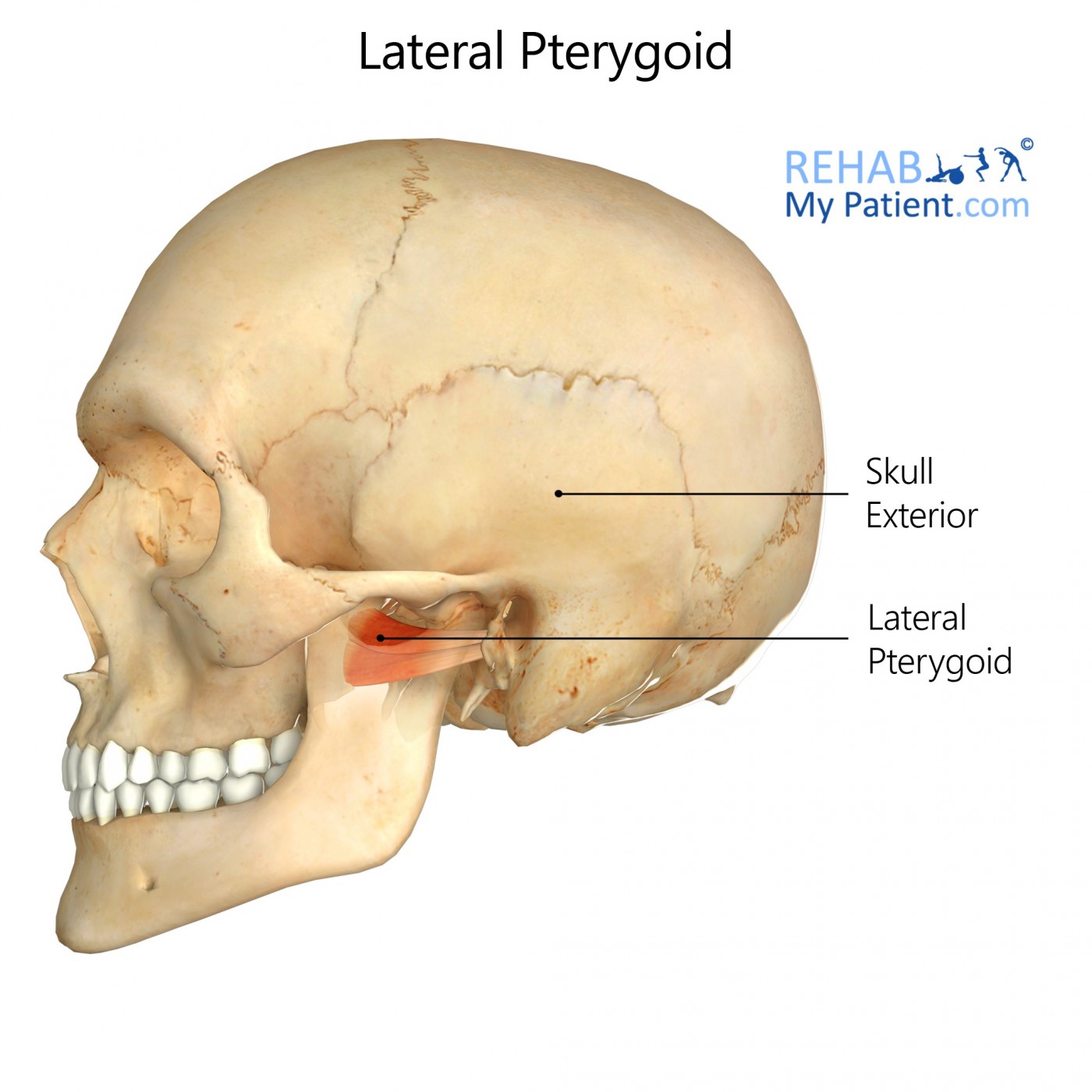
General information
The lateral pterygoid, also known as the external pterygoid, is a muscle of mastication (chewing).
Literal meaning
The wing-shaped muscle to the side.
Interesting information
The lateral pterygoid muscle has two distinct heads at its origin, a superior head and an inferior head. The superior head is attached to the greater wing of the sphenoid bone while the inferior head has an attachment at the lateral plate of the pterygoid process.
The primary function of the lateral pterygoid is to allow for protrusion and depression of the mandible. The lateral and medial pterygoids work in collaboration to facilitate contralateral movement of the jaw which allows for mastication. Of the four muscles involved in mastication, the lateral pterygoid is the only muscle that also depresses, or opens, the jaw.
If there is serious injury to one of the lateral pterygoid muscles which prevents it from contracting, the other lateral pterygoid muscle will still maintain contracture function. However, contracture of a single lateral pterygoid muscle cannot open the mouth but rather results in unproductive movement of the mandible to one side. The injured side is easily identified because the mandible will move towards the injury.
Dysfunction in either of the lateral pterygoid muscles will cause the patient to experience problems with chewing and swallowing. Temporomandibular joint dysfunction (TMD) is an umbrella term used to describe disorders involving the muscles of mastication, including the lateral pterygoid muscles. Symptoms include jaw pain, joint noise, difficulty eating, and difficulty speaking as a result of limited mandibular function. Physiotherapy, behavioral therapy, medication, surgery, and alternative medicine may be used to treat TMD.
Origin
Upper head: infratemporal crest and sphenoid bone.
Lower head: lateral plate of pterygoid process.
Insertion
Condyloid process of the mandible.
Function
Protrudes the mandible; depresses the mandible; positions the articular disk when opening and closing the mouth.
Nerve supply
Trigeminal nerve (mandibular branch).
Blood supply
Pterygoid branches of the maxillary artery.
Relevant research
Massaging the lateral pterygoid muscles using Cyriax’s principles may be an effective and non-invasive treatment option for patients suffering from TMJ dysfunction syndrome. Patients receiving this treatment have experienced significant decrease in joint clicking and pain associated with the condition.
Barriere P, Zink S, Riehm S, Kahn JL, Veillon F, Wilk A. (2009). “Massage of the lateral pterygoid muscle in acute TMJ dysfunction syndrome”. Rev Stomatol Chir Maxillofac. 110(2):77-80.
Another novel treatment proposed for sufferers of severe joint clicking associated with TMJ dysfunction syndrome is the injection of botulinum toxin (botox) directly into the lateral pterygoid muscle. Complete reduction in joint clicking can be achieved but the exact treatment mechanism is still unclear.
Bakke M, Møller E, Werdelin LM, Dalager T, Kitai N, Kreiborg S. (2005). “Treatment of severe temporomandibular joint clicking with botulinum toxin in the lateral pterygoid muscle in two cases of anterior disc displacement”. Oral Surg Oral Med Oral Pathol Oral Radiol Endod. 100(6):693-700.
Lateral pterygoid exercises

Jaw mobility exercises can be performed to target the lateral pterygoid muscles. Open your jaw approximately one inch. Then slowly move your jaw from one side to the other without opening your jaw any further. If you have difficulty maintaining a one inch gap you can clench a pen or pencil between your teeth while you perform the side to side movement. Do not force your jaw so far to the side that you experience pain. Complete three sets of ten side to side jaw movements.
Sign Up
Sign up for your free trial now!
Get started with Rehab My Patient today and revolutionize your exercise prescription process for effective rehabilitation.
Start Your 14-Day Free Trial
